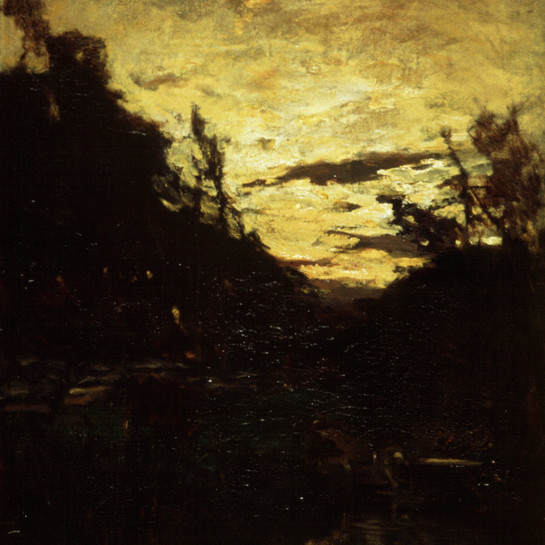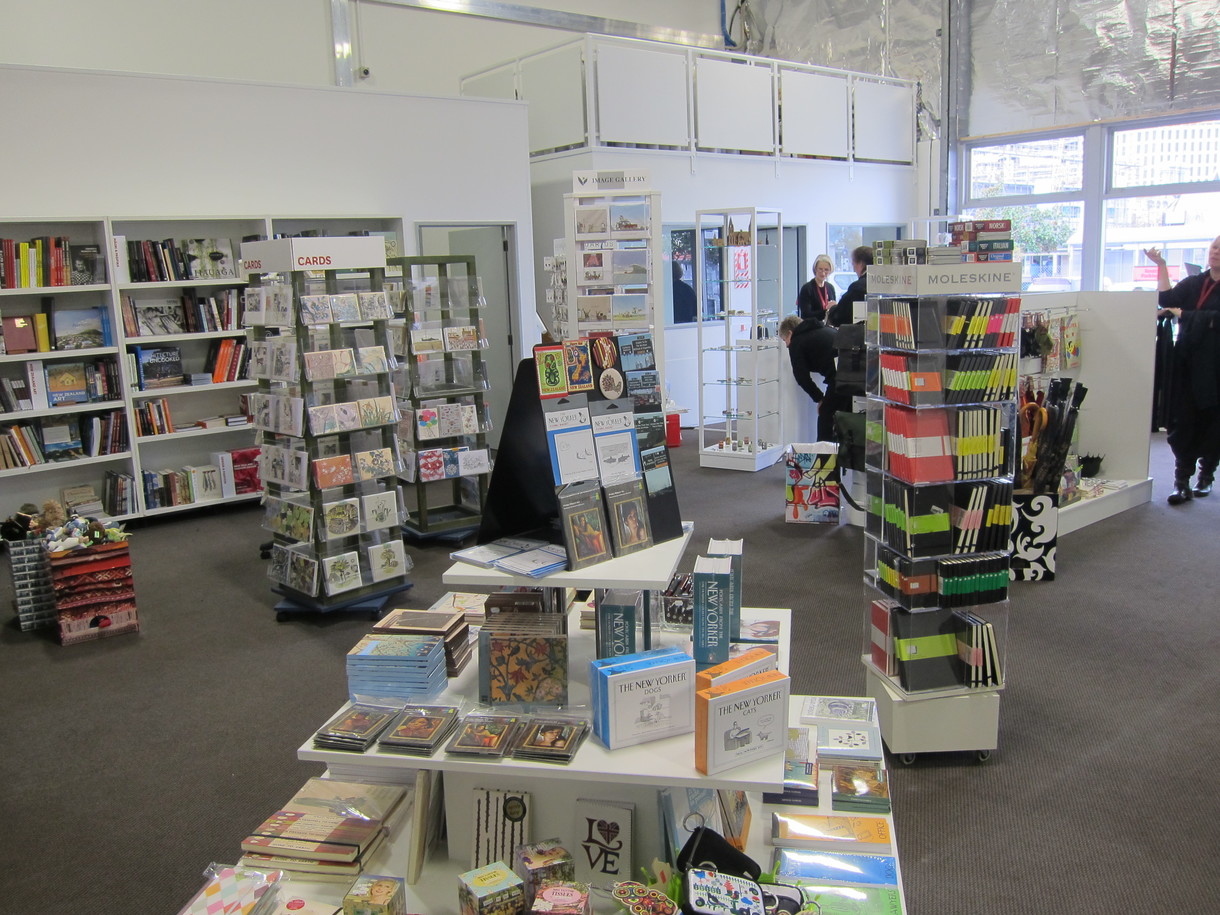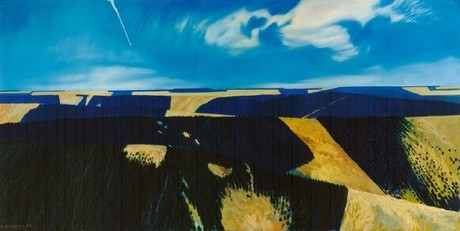Colin McCahon
Aotearoa New Zealand, b.1919, d.1987
Light falling through a dark landscape (A)
- 1972
- Synthetic polymer paint on paper
- Purchased 1972
- Reproduced courtesy of Colin McCahon Research and Publication Trust
- 1410 x 1040mm
- 72/67
Tags: abstraction, black (color), lines (geometric concept), orange (color)
For the exhibition Untitled #1050 (25 November 2017 – 14 October 2018) this work was displayed with the following label:
“As a painter I may often be more worried about you than you are about me and if I wasn’t concerned I’d not be doing my work properly as a painter. Painting can be a potent way of talking.
“Do you believe in the sunrise?
“My painting year happens first in late winter and early spring. I paint with the season and paint best during the long hot summers. I prefer to paint at night or more especially in the late summer afternoons when, as the light fades, tonal relationships become terrifyingly clear.
“At night I paint under a very large incandescent light bulb. I’ve been doing this for a long time. I am only now, and slowly, becoming able to paint in the morning. After a lifetime of working – farming, factories, gardening, teaching, the years at the Auckland City Art Gallery – I find it hard to paint in the world’s usual work-time. It can be difficult to accept that painting too is work.”
—Colin McCahon, 1972
Exhibition History
McCahon / Van der Velden, 18 December 2015 – 7 August 2016
When asked in 1976, in response to the use of light and dark in his paintings, if he saw New Zealand as a land of contrasts, McCahon replied:
'Very much, incredibly. You can’t escape that of course, it’s there so it must filter through into things, but I don’t consciously strive for the New Zealand light. It’s just so beautiful, that’s all. You can do such a lot with it. That is if you’re not one of those fools that regards black as something other than colour.'If you regard it as colouring it’s a superb colour.'
In an earlier interview, McCahon described his Necessary Protection works, to which this work directly relates:
'They have to do with the days and nights in the wilderness and our constant need for help and protection. The symbols are very simple. The I of the sky, falling light and enlightened land, is also ONE. The T of the sky and light falling into a dark landscape is also the T of the Tau or Old Testament, or Egyptian cross.'
In this abstract work, Colin McCahon has used light to symbolically represent hope. McCahon often featured light in his works, both as a physical phenomenon and as a metaphor. In 1971 McCahon worked on a series of small acrylic paintings called Necessary Protection in which he used the basic shapes of ‘I’ and ‘T’ to symbolise spiritual associations and humankind's need for help and protection. Light Falling Through a Dark Landscape belongs to this period and is characteristic of his attempt to embody something of the spirituality of the image through the use of colour. McCahon is now widely regarded as New Zealand's most important modern painter. He was born in Timaru and studied art in Dunedin, first exhibiting his work in 1949. He spent time in Christchurch and Nelson but moved to Auckland in 1953, working first at the City Art Gallery, then at the University of Auckland School of Fine Arts. In 1971 McCahon resigned from teaching to paint full-time. He died in Auckland. (Label date unknown)
















